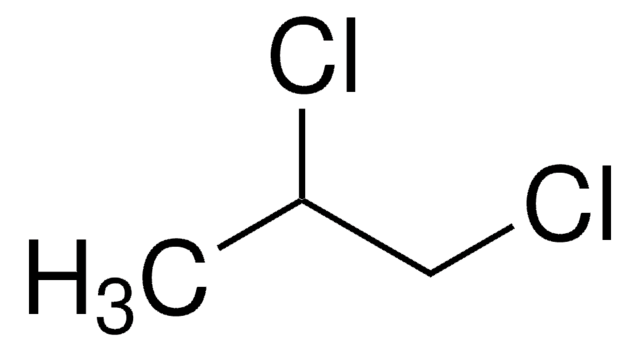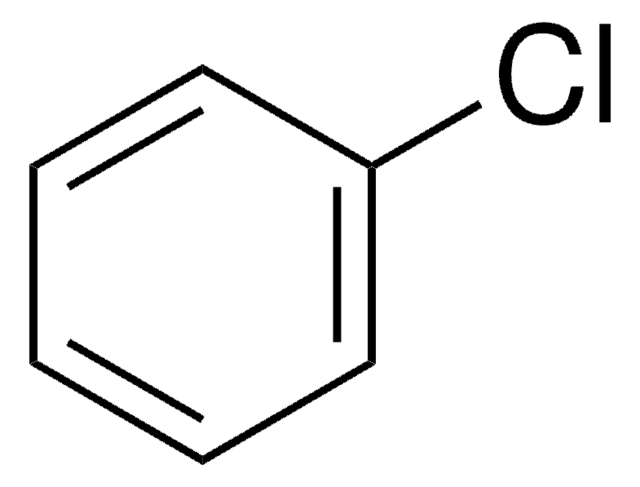36969
trans-1,2-Dichloroéthylène
analytical standard
Synonyme(s) :
trans-1,2-Dichloroethene, trans-Acetylene dichloride
About This Item
Produits recommandés
Qualité
analytical standard
Niveau de qualité
Pression de vapeur
5.16 psi ( 20 °C)
Durée de conservation
limited shelf life, expiry date on the label
Limite d'explosivité
12.8 %
Technique(s)
HPLC: suitable
gas chromatography (GC): suitable
Indice de réfraction
n20/D 1.446 (lit.)
pb
48 °C (lit.)
Pf
−50 °C (lit.)
Densité
1.257 g/mL at 25 °C (lit.)
Application(s)
environmental
Format
neat
Chaîne SMILES
Cl\C=C\Cl
InChI
1S/C2H2Cl2/c3-1-2-4/h1-2H/b2-1+
Clé InChI
KFUSEUYYWQURPO-OWOJBTEDSA-N
Vous recherchez des produits similaires ? Visite Guide de comparaison des produits
Description générale
Application
Mention d'avertissement
Danger
Mentions de danger
Conseils de prudence
Classification des risques
Acute Tox. 4 Inhalation - Aquatic Chronic 3 - Flam. Liq. 2
Code de la classe de stockage
3 - Flammable liquids
Classe de danger pour l'eau (WGK)
WGK 2
Point d'éclair (°F)
42.8 °F - closed cup
Point d'éclair (°C)
6.0 °C - closed cup
Équipement de protection individuelle
Eyeshields, Faceshields, Gloves
Faites votre choix parmi les versions les plus récentes :
Déjà en possession de ce produit ?
Retrouvez la documentation relative aux produits que vous avez récemment achetés dans la Bibliothèque de documents.
Les clients ont également consulté
Protocoles
US EPA Method 8260 describes the analysis of volatile organic compounds in solid wastes and ground waters. This application illustrates the analysis of many compounds commonly analyzed by this method using purge and trap coupled to GC-MS.
Notre équipe de scientifiques dispose d'une expérience dans tous les secteurs de la recherche, notamment en sciences de la vie, science des matériaux, synthèse chimique, chromatographie, analyse et dans de nombreux autres domaines..
Contacter notre Service technique














